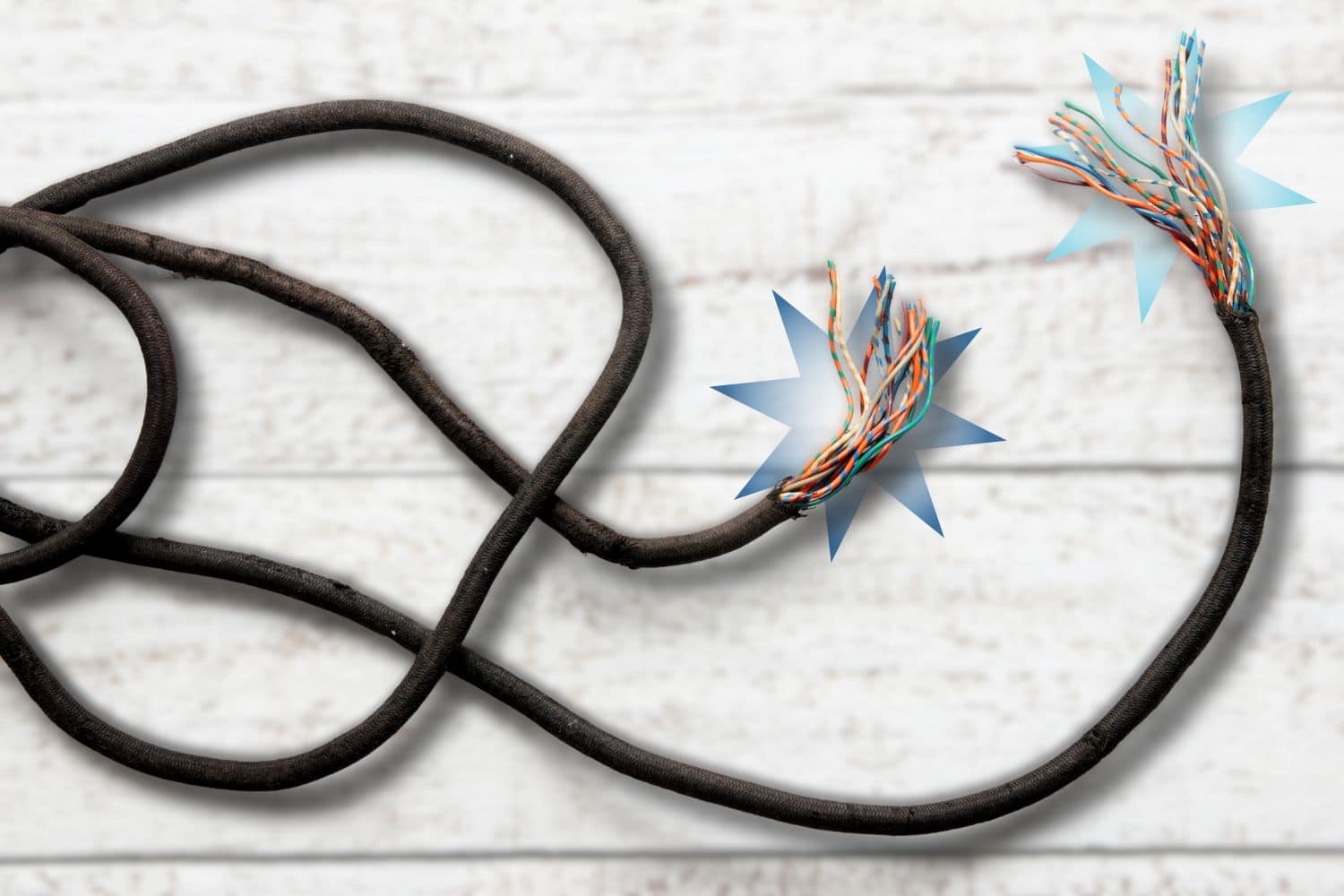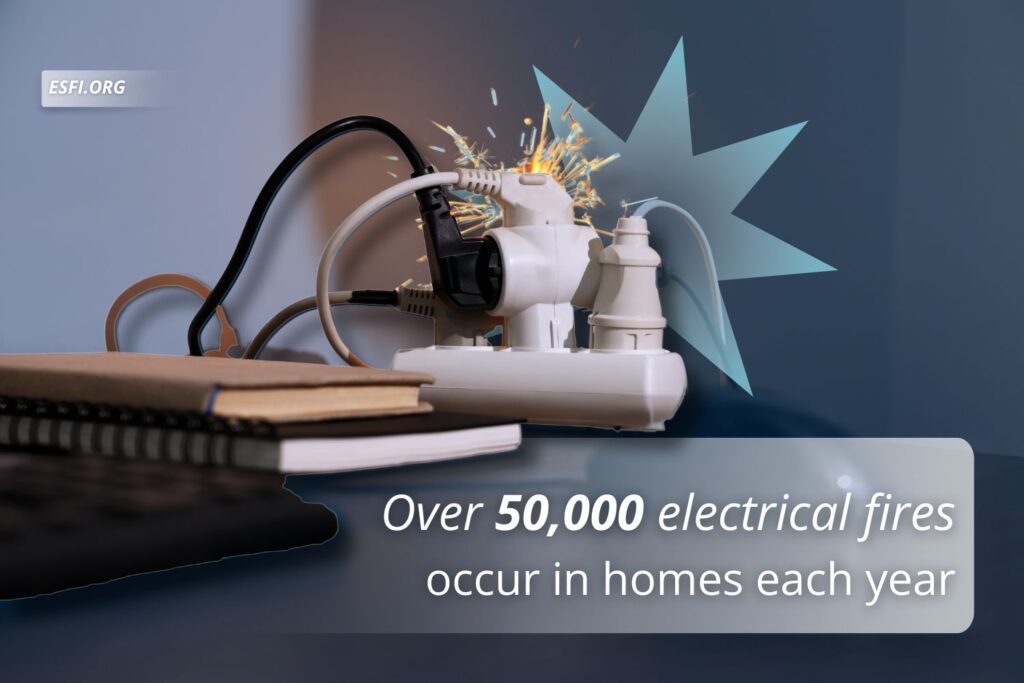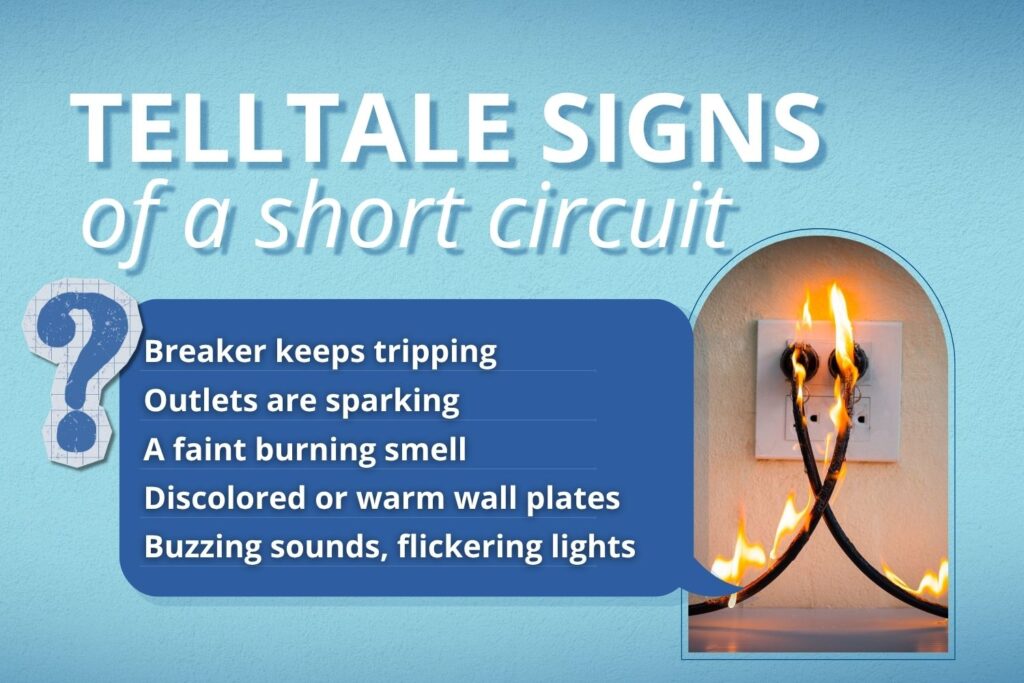
Electrical shorts can lead to fires, shocks, or serious damage. So, what actually causes a short in an electrical circuit? And how can you catch risk factors before they become a problem?
If your lights flicker, a breaker keeps tripping, or you smell something burning near an outlet, it could be a sign of a short circuit. Let’s break it down.
What Is a Short Circuit?
A short circuit happens when energy takes an unintended shortcut through your electrical wiring.
Normally, electrical current flows along a safe, designated path. But if that path is interrupted, such as by damaged insulation or a loose wire, the current can escape and create a short.
This sudden flow of energy can generate extreme heat, melt wires, or spark a fire.
According to the National Fire Protection Association (NFPA), electrical failures or malfunctions are one of the leading causes of house fires in the U.S.

What Is the Main Cause?
The most common cause of a short circuit is damaged or exposed wiring. This can happen for several reasons…
- Aging electrical systems
In homes built before the 1980s, older wires may have brittle insulation or outdated materials that break down over time. - Rodent or pest damage
Rodents sometimes chew through wires inside walls or attics. This leaves exposed metal that can spark when current flows through. - Loose connections
If a wire isn’t securely attached to a switch, outlet, or breaker, it can shift or disconnect and cause a short. - Moisture exposure
Water near wiring can be dangerous. Damp basements, crawl spaces, or faulty outdoor outlets may create a path for current to jump where it shouldn’t. - DIY electrical work
Incorrectly installed fixtures, overloaded circuits, or poor repairs can lead to short circuits. Even a single loose screw behind a light switch can do damage.
In all these cases, the root problem is the same: electricity is finding a faster path than it’s supposed to, often by bypassing safety barriers.
The Signs of an Electrical Short Circuit
Not all electrical issues are caused by shorts, but here are some red flags to watch for:
- Breakers that trip repeatedly
- Outlets that spark when plugging in a device
- A faint burning smell near switches or outlets
- Discolored or warm wall plates
- Buzzing or humming sounds from inside walls
- Lights that flicker, even after replacing the bulb
If you notice any of these, stop using the circuit and get it inspected. Continuing to run electricity through a faulty connection can make the problem worse.
Why This Should Never Be Ignored
Even if the issue seems small, short circuits can quickly escalate. The U.S. Consumer Product Safety Commission estimates that over 50,000 electrical fires occur in homes each year. Many of those start inside walls, long before smoke or damage is visible.
On top of fire risk, shorts can also damage appliances or electronics. They may also point to a deeper problem in your home’s electrical system, especially if it hasn’t been inspected in years.

Other Electrical Safety to Consider
Since shorts often signal a larger issue, this is a good time to check other parts of your home’s electrical health.
Look for outdated wiring
If your home still uses aluminum wiring or knob-and-tube systems, these materials are more prone to shorts and may not meet today’s safety standards.
Test your GFCI outlets
Ground Fault Circuit Interrupters (GFCIs) are designed to shut off electricity when there’s a sudden spike in current. These should be installed near sinks, bathrooms, laundry areas, and outdoor outlets.
Schedule a full home electrical inspection
An inspection can uncover issues you can’t see, like overloaded circuits, missing junction boxes, or poor grounding. This is especially helpful before buying or selling a home.
When to Call a Professional
Short circuits are not a DIY fix. Even if you’re handy, electrical problems involve real risk. A licensed electrician or certified home inspector can test your system safely and figure out what’s going wrong.
In Washington state, any time an electrical issue involves rewiring or breaker replacement, it must be handled by a qualified electrician with a state license. That’s not just for your safety. It’s also required by most insurance policies and local codes.
At Boggs Inspection Services, we help homeowners identify potential electrical hazards during inspections. If we spot a problem, we’ll let you know exactly what needs attention and whether a licensed electrician should take over.
Homes with electrical problems are significantly more likely to experience a fire than those with updated systems and proper maintenance. Early inspection is one of the easiest ways to protect your home and avoid costly surprises.
Related Questions
Can a short circuit start a fire?
Yes. A short circuit can generate enough heat to ignite insulation, drywall, or nearby wood framing. Electrical fires often begin inside walls, making them hard to detect until serious damage has already occurred.
Is it safe to reset a tripped breaker multiple times?
Not usually. If a breaker keeps tripping, it means something is wrong with the circuit. Repeatedly resetting it without finding the cause can lead to bigger problems. A professional should inspect the source.
How can I tell if my home’s wiring is outdated?
Homes built before 1980 may have older wiring systems that don’t meet modern codes. Signs include two-prong outlets, dim lighting, or a lack of GFCI outlets. An inspection can confirm what type of wiring you have.
Conclusion
The main cause of a short in an electrical circuit is damaged or exposed wiring, often made worse by age, moisture, or pests.
If you notice flickering lights, tripped breakers, or burning smells, don’t ignore them. Catching the signs early can help prevent costly damage and keep your home safe.
If you haven’t had your home (including the electrical system) inspected recently, this is a smart time to schedule one. A simple check now can protect your property for years.



